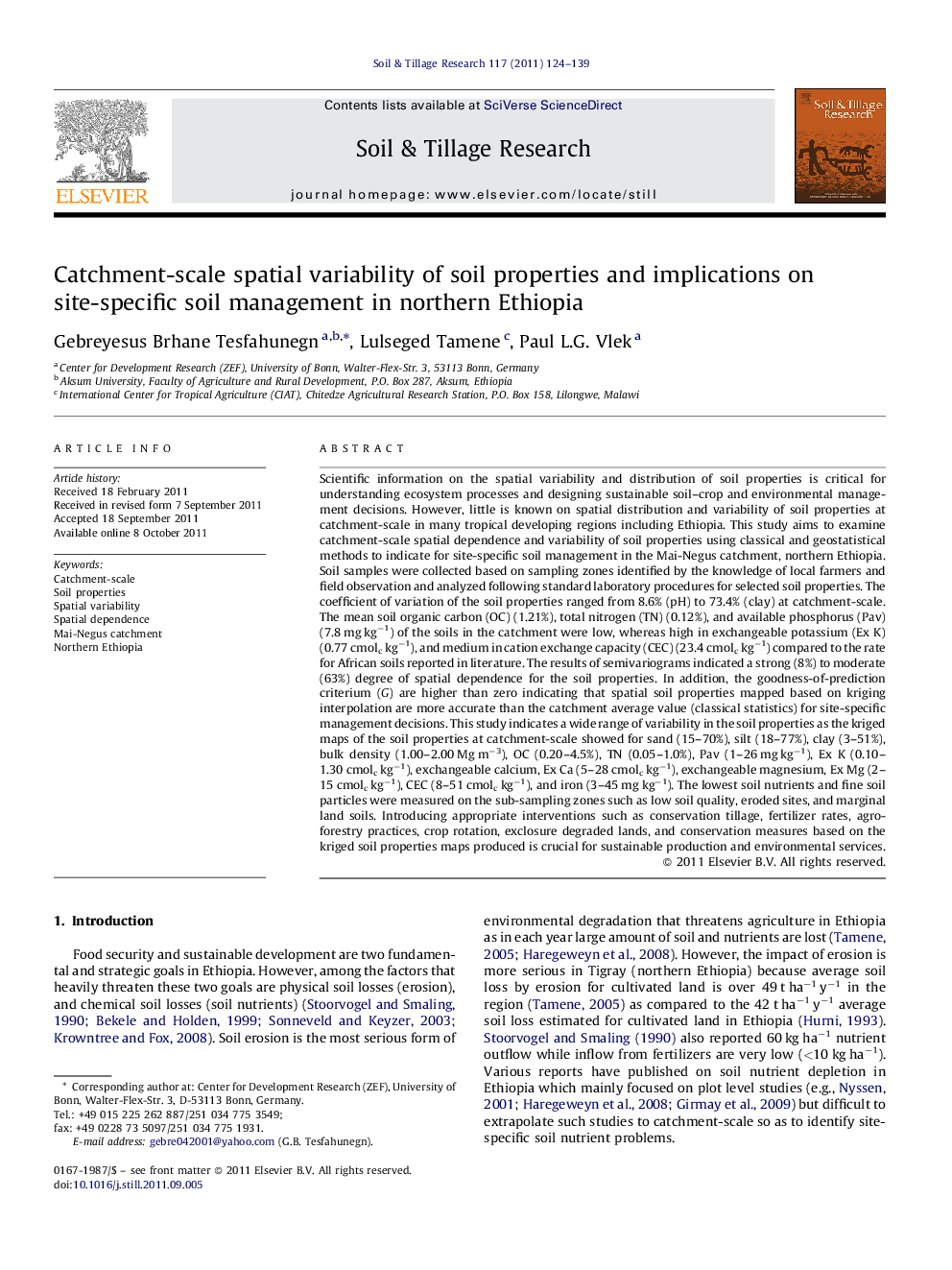| کد مقاله | کد نشریه | سال انتشار | مقاله انگلیسی | نسخه تمام متن |
|---|---|---|---|---|
| 306044 | 513068 | 2011 | 16 صفحه PDF | دانلود رایگان |

Scientific information on the spatial variability and distribution of soil properties is critical for understanding ecosystem processes and designing sustainable soil–crop and environmental management decisions. However, little is known on spatial distribution and variability of soil properties at catchment-scale in many tropical developing regions including Ethiopia. This study aims to examine catchment-scale spatial dependence and variability of soil properties using classical and geostatistical methods to indicate for site-specific soil management in the Mai-Negus catchment, northern Ethiopia. Soil samples were collected based on sampling zones identified by the knowledge of local farmers and field observation and analyzed following standard laboratory procedures for selected soil properties. The coefficient of variation of the soil properties ranged from 8.6% (pH) to 73.4% (clay) at catchment-scale. The mean soil organic carbon (OC) (1.21%), total nitrogen (TN) (0.12%), and available phosphorus (Pav) (7.8 mg kg−1) of the soils in the catchment were low, whereas high in exchangeable potassium (Ex K) (0.77 cmolc kg−1), and medium in cation exchange capacity (CEC) (23.4 cmolc kg−1) compared to the rate for African soils reported in literature. The results of semivariograms indicated a strong (8%) to moderate (63%) degree of spatial dependence for the soil properties. In addition, the goodness-of-prediction criterium (G) are higher than zero indicating that spatial soil properties mapped based on kriging interpolation are more accurate than the catchment average value (classical statistics) for site-specific management decisions. This study indicates a wide range of variability in the soil properties as the kriged maps of the soil properties at catchment-scale showed for sand (15–70%), silt (18–77%), clay (3–51%), bulk density (1.00–2.00 Mg m−3), OC (0.20–4.5%), TN (0.05–1.0%), Pav (1–26 mg kg−1), Ex K (0.10–1.30 cmolc kg−1), exchangeable calcium, Ex Ca (5–28 cmolc kg−1), exchangeable magnesium, Ex Mg (2–15 cmolc kg−1), CEC (8–51 cmolc kg−1), and iron (3–45 mg kg−1). The lowest soil nutrients and fine soil particles were measured on the sub-sampling zones such as low soil quality, eroded sites, and marginal land soils. Introducing appropriate interventions such as conservation tillage, fertilizer rates, agro-forestry practices, crop rotation, exclosure degraded lands, and conservation measures based on the kriged soil properties maps produced is crucial for sustainable production and environmental services.
► Based on field knowledge, the study catchment was stratified into zone samplings.
► Classical and geostatistics methods were used to analyze selected soil properties.
► The classical statistics shows the mean variability of the soil properties.
► Geostatistics produced spatial dependence and interpolated soil properties maps.
► This supports decision making to landscape position exposed to nutrient degradation.
Journal: Soil and Tillage Research - Volume 117, December 2011, Pages 124–139